The Ultimate Guide to Traditional Truck Bed Tents: Setup, Materials, Features, and More
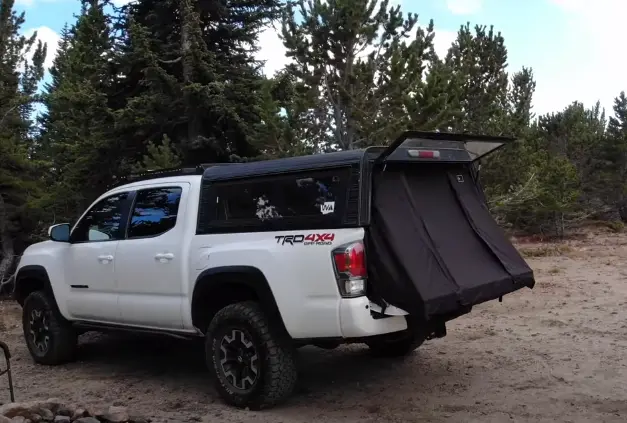
Traditional truck bed tents have revolutionized the camping experience by providing a comfortable and elevated sleeping area that fits snugly into the bed of a pickup truck. This innovative camping solution is perfect for those who love the great outdoors but want to avoid the discomfort of sleeping on the ground. This comprehensive guide will explore all aspects of traditional truck bed tents, including setup, materials, features, sizes, compatibility, benefits, durability, weatherproofing, ventilation, and portability.
Our Top Picks
Budget Pick

Napier Backroadz Truck Bed Tent
➤ Brand: Napier
➤ Product Dimensions: 60″L x 42″W x 66″H
➤ Item Weight: 8 Pounds
➤ Water Resistance: 1500mm PU
➤ Occupancy: 2 Person
Budget Pick

Rightline Gear Truck Bed Tent
➤ Brand: Rightline Gear
➤ Product Dimensions: 23.3″L x 14.2″W x 14.2″H
➤ Water Resistance Technology: 2000 millimeters
➤ Occupant Capacity: 2 Persons
What is a Traditional Truck Bed Tent?
A traditional truck bed tent is a specially designed tent that fits into the bed of a pickup truck, transforming it into a cozy sleeping area. These tents are popular among campers and outdoor enthusiasts because they provide the comfort and convenience of sleeping off the ground while utilizing the truck bed space. Truck bed tents are available in various designs and sizes to fit different truck models, making them a versatile option for many campers.
Traditional Truck Bed Tent Setup
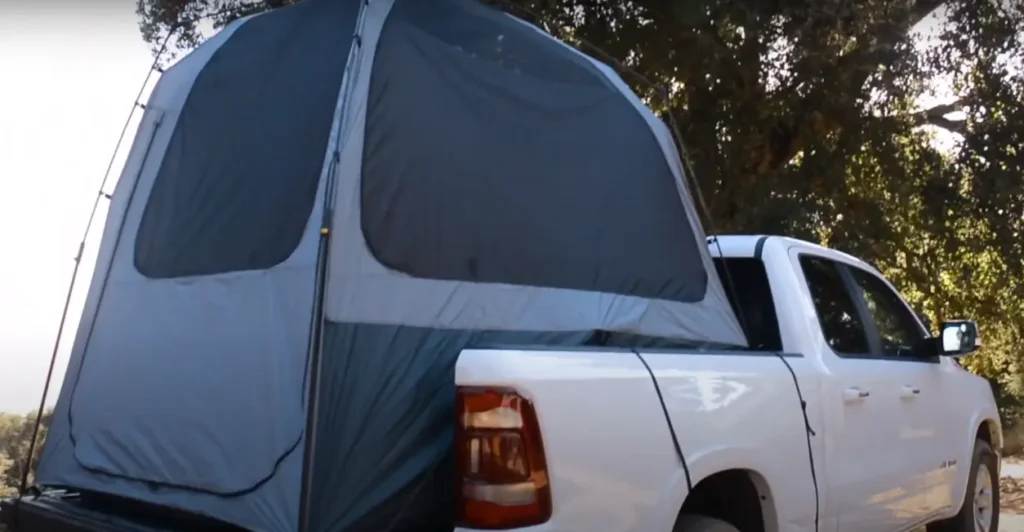
Setting up a traditional truck bed tent can seem daunting at first, but with a little practice, it becomes a straightforward process. Here’s a step-by-step guide to help you set up your traditional truck bed tent efficiently:
- Prepare Your Truck Bed:
Start by clearing out any debris or items from your truck bed. Ensure the surface is clean and dry to provide a stable base for your tent.
- Lay Out the Tent:
Unpack your tent and spread it out in the truck bed, aligning it with the edges. Make sure the tent is oriented correctly, with the door facing the desired direction.
- Attach the Tent:
Secure the tent to the truck bed using the provided straps and clips. Most traditional truck bed tents come with adjustable straps that attach to the truck’s tie-down hooks or other anchor points.
- Assemble the Poles:
Follow the manufacturer’s instructions to assemble the tent poles. Insert the poles into the designated sleeves or clips on the tent and secure them in place.
- Secure the Rainfly:
If your tent includes a rainfly, attach it over the tent for additional weather protection. Ensure it is tightly secured to prevent it from blowing off in windy conditions.
- Check Stability:
Double-check all straps, poles, and connections to ensure the tent is stable and secure. Make any necessary adjustments to improve the fit and stability.
Setting up a traditional truck bed tent becomes easier with practice. Familiarizing yourself with the setup process before heading out on a camping trip can save you time and frustration.
Traditional Truck Bed Tent Materials
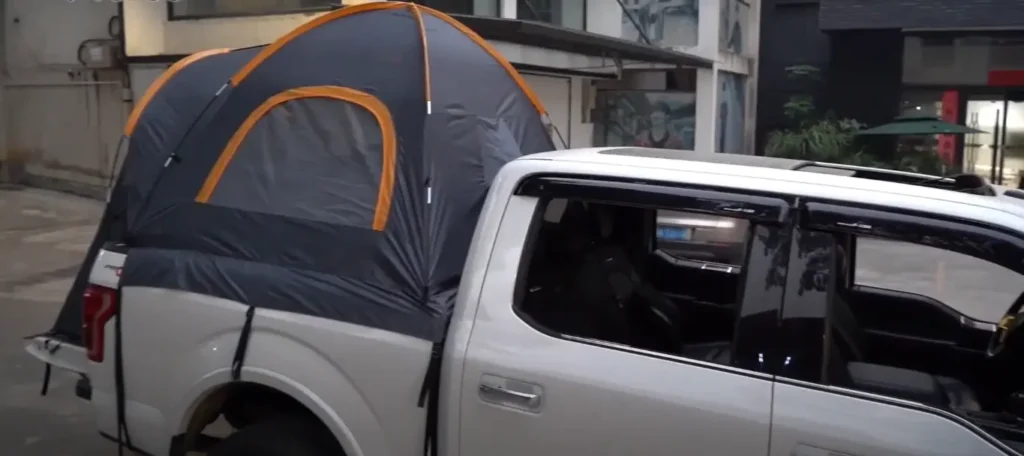
The materials used in traditional truck bed tents are crucial for their performance and durability. Here are some common materials and their characteristics:
- Polyester:
Polyester is a popular choice for truck bed tents due to its lightweight and water-resistant properties. It is durable and dries quickly, making it suitable for various weather conditions. However, polyester may not be as breathable as other materials.
- Nylon:
Nylon is another common material used in truck bed tents. It is known for its strength and durability, making it ideal for heavy-duty use. Nylon tents are often coated with polyurethane for added water resistance. They are slightly heavier than polyester tents but offer excellent longevity.
- Canvas:
Canvas is a traditional material that offers superior breathability and durability. Canvas truck bed tents are often more expensive and heavier than those made from synthetic materials. They provide excellent protection from the elements and are ideal for long-term camping trips. However, canvas tents require more maintenance and care to prevent mold and mildew.
When choosing a traditional truck bed tent, consider the climate and conditions in which you will be camping. Selecting the right material can significantly impact your comfort and the tent’s performance.
Traditional Truck Bed Tent Features
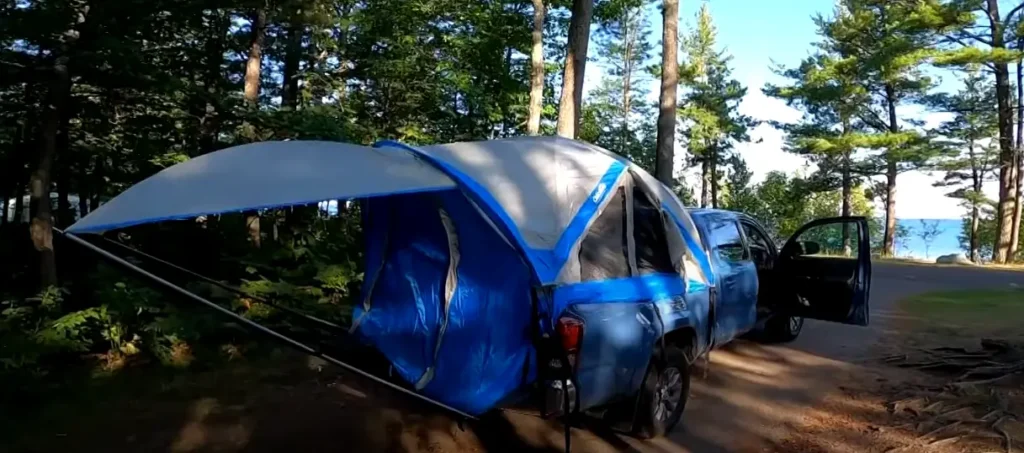
Traditional truck bed tents come with a variety of features designed to enhance comfort and convenience. Here are some key features to look for:
- Ease of Setup:
Tents with color-coded poles, intuitive designs, and clear instructions are easier to set up. Look for features that simplify the setup process, especially if you plan to camp frequently.
- Weather Resistance:
High-quality rainflies, sealed seams, and water-resistant materials are essential for weather protection. Consider tents with additional weatherproofing features for camping in harsh conditions.
- Ventilation:
Proper ventilation is crucial to prevent condensation and ensure a comfortable sleeping environment. Tents with mesh windows, vents, and breathable materials offer better airflow and reduce moisture buildup.
- Interior Space:
Assess the tent’s dimensions and interior layout to ensure it provides enough space for sleeping and storing gear. Some tents come with built-in storage pockets and gear lofts for added convenience.
- Durability:
Reinforced seams, heavy-duty zippers, and robust materials contribute to the tent’s durability. Consider the tent’s construction and quality of materials to ensure it can withstand regular use.
- Portability:
Lightweight and compact tents are easier to transport and store. Look for tents that come with a carrying bag and pack down to a manageable size for easy portability.
Traditional Truck Bed Tent Sizes
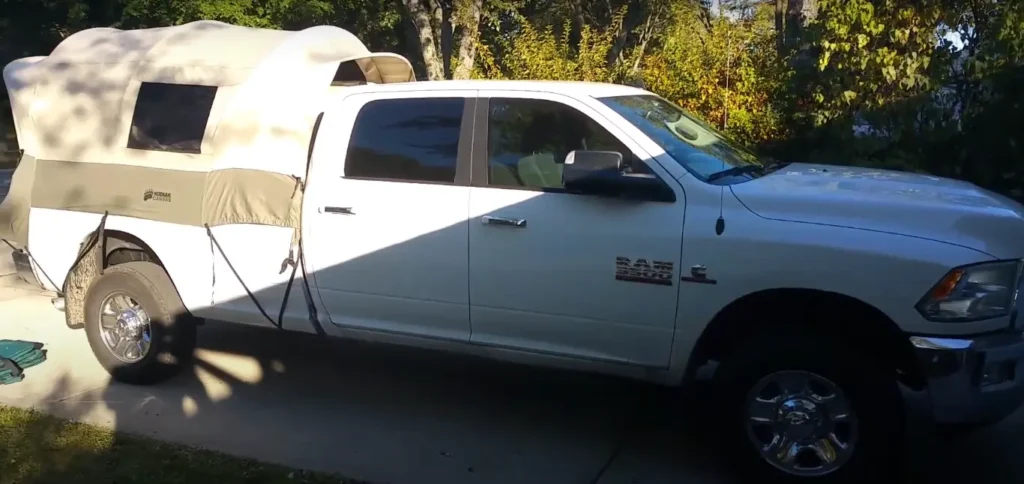
Traditional truck bed tents are available in various sizes to fit different truck models and bed lengths. Here’s how to choose the right size:
- Measure Your Truck Bed:
Measure the length, width, and depth of your truck bed to determine the appropriate tent size. Be sure to account for any features like toolboxes or bed liners that may affect the fit.
- Check Manufacturer Guides:
Most tent manufacturers provide size guides and compatibility charts to help you choose the right tent for your truck model. Refer to these guides for specific recommendations.
- Consider Your Needs:
Think about how much space you need for sleeping and storing gear. If you plan to camp with multiple people or require extra storage space, opt for a larger tent.
Choosing the right size ensures a proper fit and maximizes comfort during your camping trips.
Traditional Truck Bed Tent Compatibility
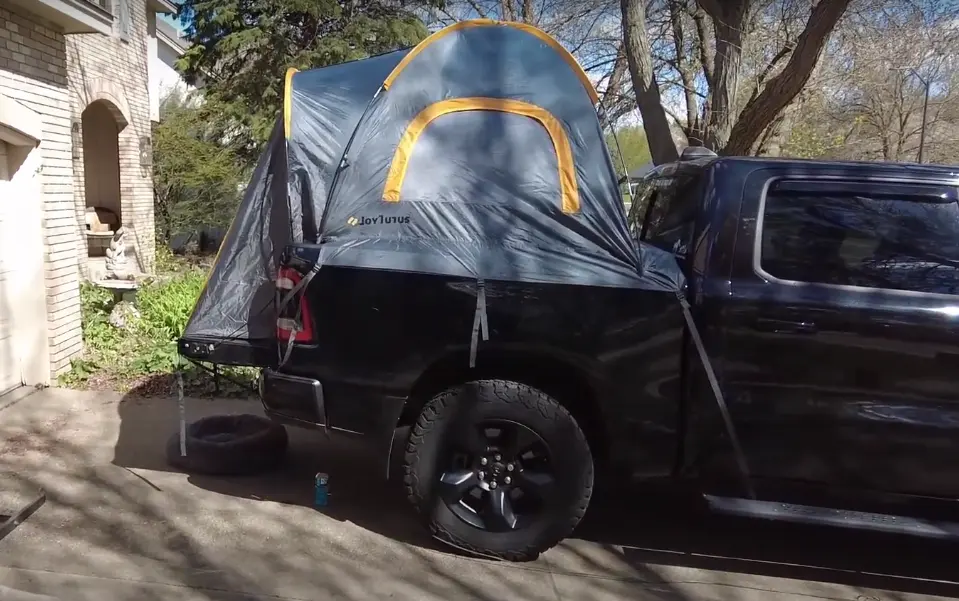
Compatibility is a crucial factor when selecting a traditional truck bed tent. Here’s what to consider:
- Truck Model:
Ensure the tent is compatible with your specific truck model. Some tents are designed for particular makes and models, while others offer universal compatibility.
- Bed Features:
Consider any features or accessories in your truck bed, such as toolboxes, bed liners, or tonneau covers, that may affect the tent’s fit. Some tents come with adapter kits to accommodate these features.
- Customization Options:
If your truck bed has unique dimensions or features, look for tents that offer customization options or adjustable straps to ensure a secure fit.
Verifying compatibility before purchasing a tent can prevent issues and ensure a smooth setup.
Traditional Truck Bed Tent Benefits
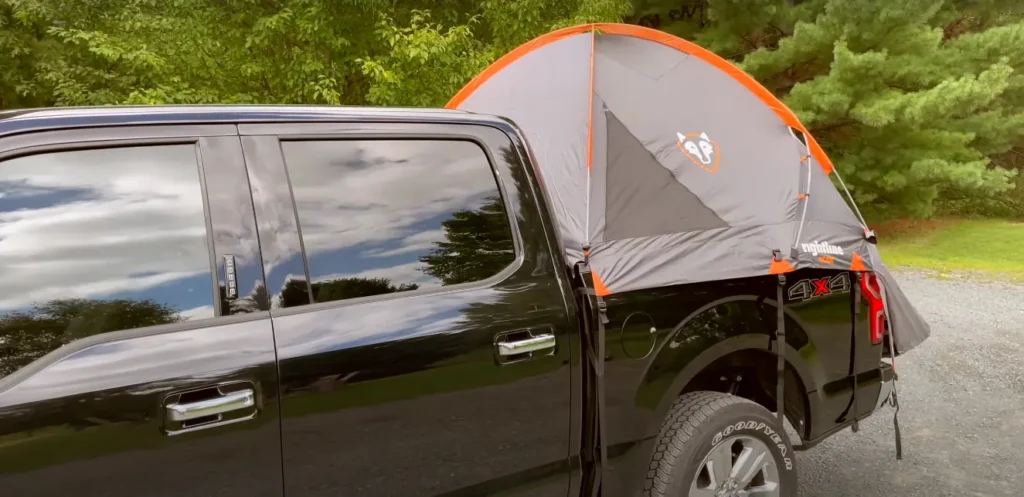
Traditional truck bed tents offer numerous benefits that make them an attractive option for campers:
- Elevated Sleeping Area:
Sleeping off the ground protects from moisture, insects, and uneven terrain, enhancing comfort and safety.
- Convenience:
Truck bed tents are easy to set up and take down, allowing for spontaneous camping trips. They utilize the truck bed space efficiently, making them ideal for quick getaways.
- Versatility:
These tents can be used in various environments, from established campsites to remote off-road locations. Their versatility makes them suitable for a wide range of camping styles and preferences.
- Security:
Sleeping in the truck bed offers an added sense of security compared to ground tents. It can also provide better insulation from cold ground temperatures.
- Space Efficiency:
Truck bed tents maximize the use of available space, allowing for comfortable sleeping arrangements and gear storage within a compact area.
Traditional Truck Bed Tent Durability
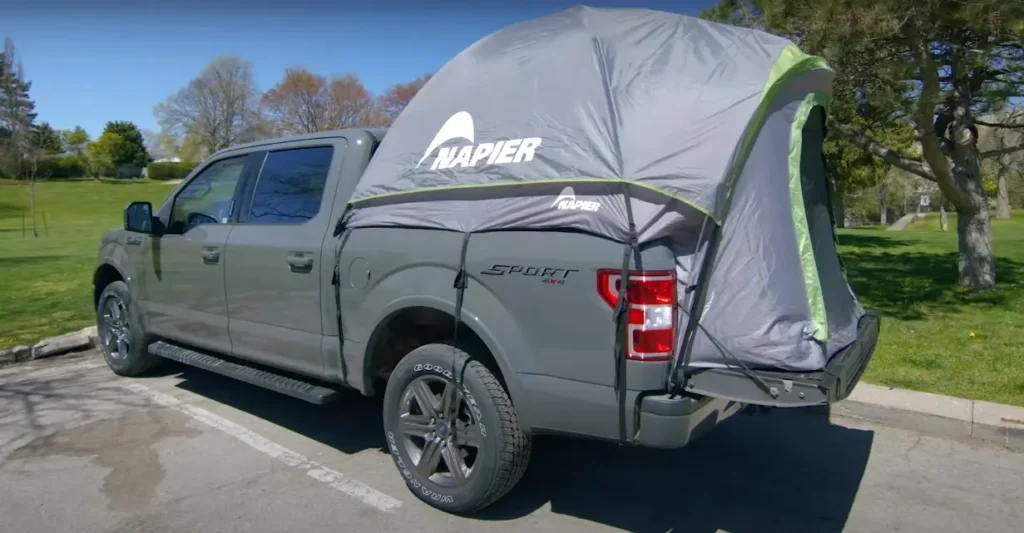
Durability is a key consideration when choosing a traditional truck bed tent. Here are factors that affect durability:
- Material Quality:
High-quality materials, such as heavy-duty nylon or canvas, contribute to the tent’s durability. Look for tents with reinforced seams and robust construction.
- Maintenance:
Proper maintenance, including regular cleaning and storage, can significantly extend the life of your tent. Follow the manufacturer’s care instructions to keep your tent in good condition.
- Usage Frequency:
Frequent use in harsh conditions can affect the tent’s durability. If you plan to camp regularly, invest in a higher-quality tent designed for heavy-duty use.
- Weather Exposure:
Prolonged exposure to extreme weather conditions, such as strong winds, heavy rain, and intense sunlight, can degrade the tent’s materials over time. Consider using additional
protective measures, like a tarp or groundsheet, to reduce wear and tear.
Choosing a durable tent ensures it will withstand regular use and provide reliable performance over time.
Traditional Truck Bed Tent Weatherproofing
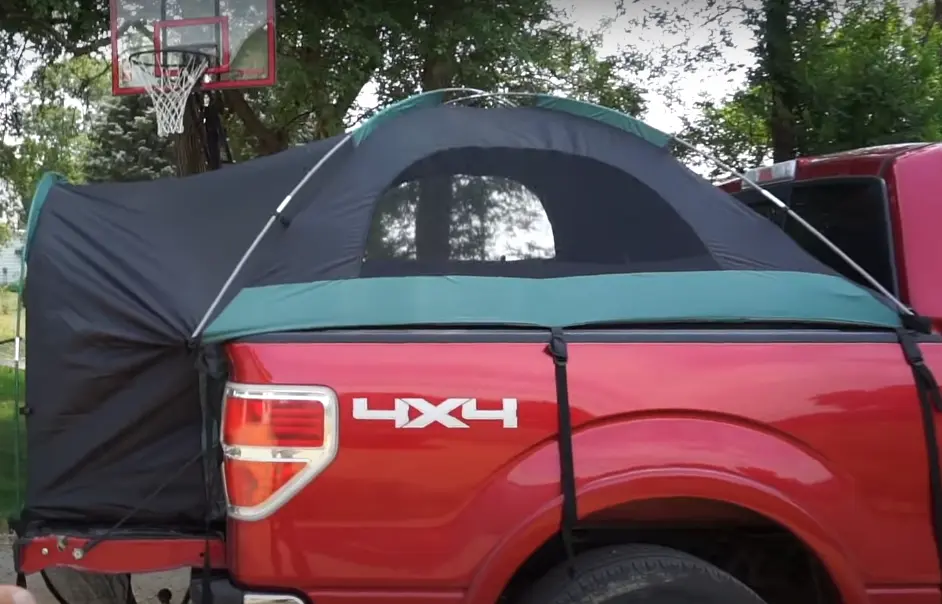
Weatherproofing is essential for a comfortable and safe camping experience. Here are key weatherproofing features to consider:
- Rainfly:
A high-quality rainfly provides an additional layer of protection against rain and wind. Ensure the rainfly covers the entire tent and is securely attached.
- Sealed Seams:
Sealed seams prevent water from seeping through the tent fabric. Look for tents with factory-sealed seams or apply seam sealer for added protection.
- Water-Resistant Materials:
Tents made from water-resistant materials, such as coated polyester or nylon, offer better protection from the elements. Ensure the tent’s material has a sufficient waterproof rating for the expected conditions.
- Ventilation:
Proper ventilation is crucial to prevent condensation buildup inside the tent. Tents with mesh windows, vents, and breathable fabrics allow for better airflow, keeping the interior dry and comfortable.
Traditional Truck Bed Tent Ventilation
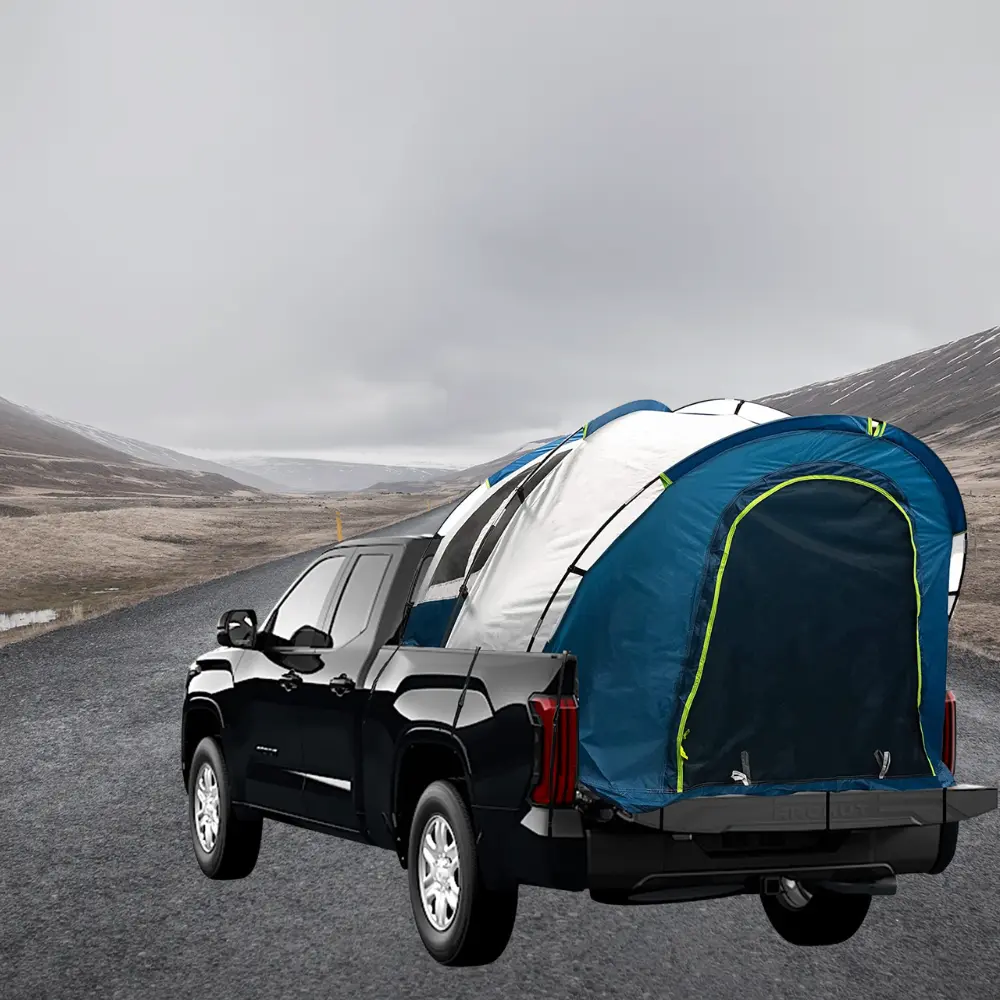
Ventilation is a critical aspect of traditional truck bed tents, ensuring that the interior remains comfortable and free from condensation. Effective ventilation features include:
- Mesh Windows:
Mesh windows allow air to circulate while keeping insects out. Look for tents with multiple mesh windows to enhance airflow.
- Roof Vents:
Roof vents enable hot air to escape, reducing heat buildup inside the tent. These are particularly useful in warm weather.
- Breathable Fabrics:
Tents made from breathable materials help maintain a comfortable temperature and reduce moisture inside the tent.
- Adjustable Venting Options:
Tents with adjustable vents allow you to control the airflow based on weather conditions, enhancing comfort.
Proper ventilation not only keeps the interior of the tent fresh but also helps regulate temperature and minimize moisture buildup.
Traditional Truck Bed Tent Portability
Portability is a significant advantage of traditional truck bed tents, especially for campers who value mobility and ease of transport. Here are some factors that contribute to the portability of a truck bed tent:
- Lightweight Materials:
Tents made from lightweight materials such as polyester or nylon are easier to carry and set up. They also pack down to a smaller size, making them convenient to transport.
- Compact Design:
A compact design allows the tent to fit into a carrying bag, making it easy to store and transport in your vehicle. Look for tents that include a carry bag with handles or shoulder straps for added convenience.
- Easy Assembly and Disassembly:
Tents that are quick and easy to assemble and disassemble save time and effort, making them ideal for spontaneous trips or frequent use.
Portability ensures that you can easily take your traditional truck bed tent wherever your adventures lead.
Elevated Truck Bed Tents
While traditional truck bed tents offer numerous benefits, elevated truck bed tents provide an additional layer of comfort and convenience. Elevated truck bed tents are designed to sit on a platform or rack above the truck bed, offering several advantages:
- Enhanced Comfort:
By elevating the sleeping area, these tents provide better protection from ground moisture and uneven surfaces. The elevated position can also offer improved airflow and ventilation.
- Increased Storage Space:
Elevating the tent frees up the truck bed for additional storage, allowing you to carry more gear and supplies. This is particularly useful for extended camping trips.
- Improved Views:
An elevated position can offer better views of the surrounding area, enhancing the camping experience. This feature is especially appreciated in scenic locations.
When considering an elevated truck bed tent, it’s important to ensure that your truck’s platform or rack can support the weight of the tent and occupants. Additionally, consider the ease of setup and access, as elevated tents may require a ladder or steps for entry.
Conclusion
Traditional truck bed tents are an excellent choice for campers seeking the convenience and comfort of an elevated sleeping area without sacrificing portability or ease of setup. With a variety of sizes, materials, and features available, there is a traditional truck bed tent to suit every need and preference. From their durable construction to their weatherproofing and ventilation capabilities, these tents provide a reliable and enjoyable camping experience.
Investing in a high-quality truck bed tent ensures that you can enjoy the great outdoors with comfort and confidence, making your camping adventures more enjoyable and memorable.

